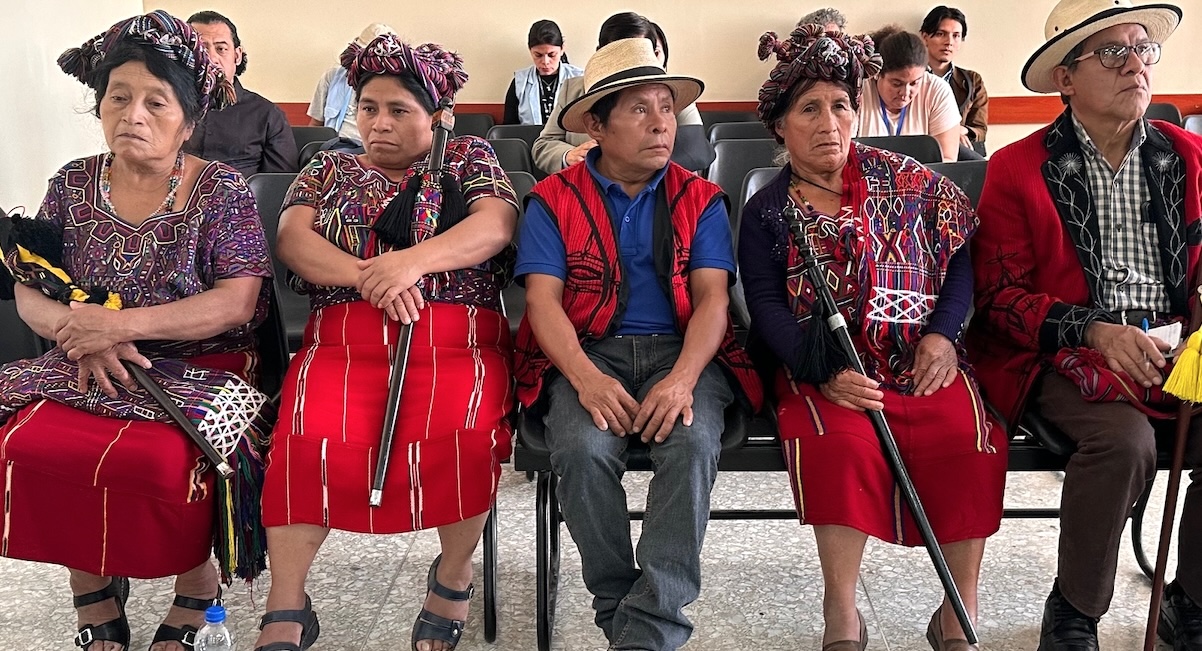GUATEMALA CITY – A critical trial is taking place here where plaintiffs are charging genocide against a retired general once feared by many but admired by others as a model soldier. If Manuel Benedicto Lucas Garcia, a former military chief of staff is found guilty, it will be a requital long in coming for indigenous Maya survivors who are testifying in vivid detail to brutal massacres.
Conviction would also be a step forward in an uneven, ongoing effort to bring justice for war crimes committed during Guatemala’s armed internal conflict between 1960 and 1996, when 200,000 died, mostly indigenous civilians, at government hands.
If Lucas is exonerated by the country’s three-judge High Risk Court, however, it would be a setback to the government of President Bernardo Arevalo, who took office in January with strong support from the Maya. For the first time since 1954 when the CIA orchestrated a Cold War coup against a democratically elected president, Arevalo leads a Guatemalan administration not beholden to the military.
During the presidency of his brother Romeo Lucas Garcia (1978-1982), now deceased, Benedicto Lucas conducted a military campaign code-named “Operation Ashes” aimed at eliminating the Ixil Maya as a group, plaintiffs charge, identifying inhabitants of the Ixil territory in the country’s northwest as guerrilla supporters, the “internal enemy.” The Ixil are one of more than 22 distinct Maya groups in the country.
“It’s my right to testify,” said Diego Raymundo, 62, early in the trial, which began in April. Young Raymundo was working the family field when his uncle arrived to tell him soldiers had killed everyone in the village, he said. Returning home, Raymundo found his mother, father, grandmother, a son and another uncle dead, although “I couldn’t see how they killed them” – soldiers had set fire to houses and bodies of the slain, including those of neighbors. Fleeing into the forest with his wife and their 5-month-old son, Raymundo said, “We ate grass for eight months.” The infant did not survive. “We buried him in a cool place.”
Other witnesses, women wearing colorful Maya woven dress distinctive to the region called the Ixil Triangle for its three main towns, testified to seeing loved ones raped, or showed how they were killed by soldiers, miming the blow of an ax, firing a gun above an ear. A psychologist from the Public Ministry, which is prosecuting the case, sat alongside each sworn eyewitness to appalling acts, prepared to offer support, or to suggest a pause to the court.
More than 1.5 million people like Raymundo and his wife were displaced in the conflict, one million traveling as far as the United States, where the population of Guatemalans has risen to 1.8 million today. California has more Guatemalans – 424,000 in the 2020 census – than any other state, and they are more likely to speak Spanish at home than most migrants from Latin America, according to the Pew Research Center.
Besides survivors of the violence, expert witnesses including researchers, scholars, and military specialists have testified to the nature of the conflict in the Ixil Triangle, to the contents of military manuals used at the time, and the chain of command. Elizabeth Oglesby, a social geographer at the University of Arizona, began studying the indigenous population displaced by the violence in 1986 with a research team led by Guatemalan anthropologist Myrna Mack. In her testimony Oglesby identified forced displacement as the third phase of the genocide, after selective assassination in the late 1970s and village massacres from 1980-1982. “Forced displacement was a systematically applied policy,” Oglesby said.
Those fleeing villages were considered guerrilla supporters, pursued by the army and bombed from the air. Israel supplied aircraft and trained pilots. Even researching their plight was dangerous; Myrna Mack, Oglesby’s early research team leader, was assassinated by a government death squad in 1990.
Another expert witness, Kate Doyle of the non-profit National Security Archive at George Washington University, a repository of declassified U.S. security documents typically obtained through the Freedom of Information Act, presented copies of twenty-four messages contemporaneous with the Ixil Triangle events from individuals at the U.S. Embassy in Guatemala City to Washington. Cables indicated that U.S. officials were aware of the extent of the violence toward non-combatants and where it was coming from – the army.
Soldiers in the field were “frustrated” at guerrilla actions and took “reprisals” against civilians, one cable said. A CIA message said commanders “have been instructed to eliminate rural settlements” and “all sources of resistance.”
Doyle concluded that in 1981 and 1982 under Lucas, “There was a dramatic surge during the counterinsurgency of indiscriminate and massive violations of human rights.”
Genocide trials are few and far between. Prosecutors must prove not only that violations occurred and follow the chain of command, but prove a particular state of mind in the accused, which can be challenging. In the Guatemala case, prosecutors must establish that former Gen. Lucas had had a clear intention to wipe out the Ixil Maya in whole or in part. Lucas has long denied culpability for civilian deaths during his command.
“I was involved in everything, tactically and militarily,” Lucas told me in an interview in 1995. When I asked whether he took any responsibility for shedding innocent blood, he said firmly, “With me no abuse was permitted, or anything of the kind.”
The trial is expected to end in July.
Journalist and author Mary Jo McConahay’s latest book is Playing God, American Catholic Bishops and the Far Right (Melville House)




